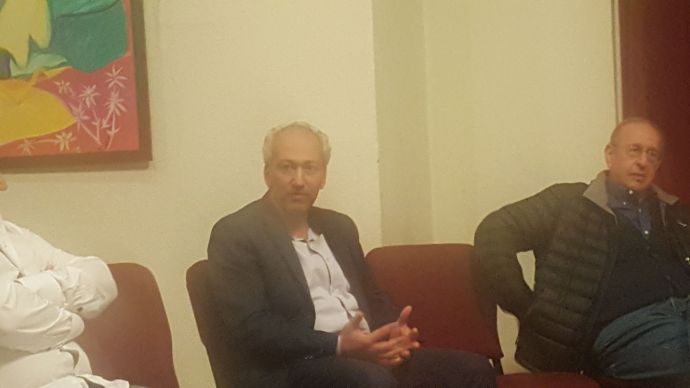Business officials in the Village of Great Neck joined Mayor Pedram Bral last Wednesday to tackle concerns surrounding struggling businesses in the old village, including high rents, empty storefronts, and what the future holds.
At the Great Neck House last Wednesday, Bral said he wanted to step back and listen to local business officials rather than express his ideas for what he wants to see in the village.
Great Neck Chamber of Commerce President Hooshang Nematzadeh said the sentiment that rents were too high for business owners in the village was a myth.
In fact, Nematzadeh said, rents are “very low,” but that causes problems for the landlords of commercial properties.
“In the old village of Great Neck you can rent a store at about $22-23 per square foot. Out of that, $9 are taxes. Not just village taxes, but taxes altogether, school taxes, village taxes, town taxes,” he said. “No landlord makes money in the old village of Great Neck because if you pay 50 percent or 40 percent of your total rent for taxes. You are left with nothing.”
Nematzadeh also said stores in the Village of Great Neck Plaza rent for between $35 and $40 per square foot, making it easier for landlords to develop their properties and create more shopper traffic, though it does not always lead to successful businesses.
“Therefore there is a lot more development and lot more activity,” he said. “In the Plaza we have the foot traffic and even there they are suffering.”
Alice Kasten, president of the Great Neck Historical Society, said though she likes to walk from store to store, “there isn’t enough of a critical mass of businesses to keep you walking.”
Former Village of Great Neck Trustee Mitch Beckerman said while he was in office, the village held focus groups about six years ago to determine what was needed to improve business.
“Part of those focus groups, the whole idea was that what everybody wants is a smaller business district, somewhere where everyone can walk,” he said.
Before Bral took office, village trustees approved the rezoning of parts of Middle Neck Road and Steamboat Road to condense the village’s business district and revitalize the downtown area.
Beckerman said the rezoning was aimed to increase foot traffic.
“We were going to put apartment buildings on either side which would make a more walkable downtown because you have people in apartment buildings who would then frequent restaurants,” Beckerman said. “They would come and they would go to more dry cleaners and things like that.”
First Vice President of the Great Neck Chamber of Commerce Dennis Grossman said he thought creating “clusters” of stores was a good idea, but only began the move to create a successful business area.
“You need a walkable population to patronize the stores,” he said. “And the stores need to match the demographic of the walkable population and also the population that lives in the surrounding area in private homes.”
Bral said the village also needed to target the young population.
“One thing the village is missing is things for teenagers and people in their mid-20s and 30s,” he said. “Which I believe is comprised of most of the people who go shopping.”
Daniel Kimiabakhsh, a manager of the Courtyard Shopping Center at 770 Middle Neck Road, said the young population feels “neglected” because they feel like they have to leave the peninsula to shop and find entertainment.
Kasten said there was nothing offered for young people to want to stay in Great Neck.
“This whole peninsula is dead at night,” she said. There is nothing to do at night.”
While the Great Neck Chamber of Commerce and village have completed resident surveys, studies, and focus groups in the past, Bral said, a lot can change in a short period of time.
“I think any study that was done more than maybe a year ago, is sort of obsolete,” he said. “I really think we need to concentrate on our younger population.”

